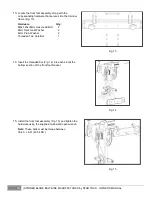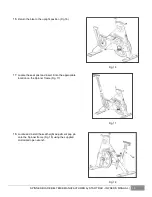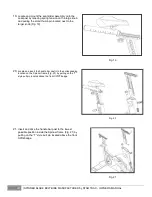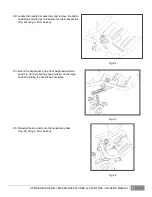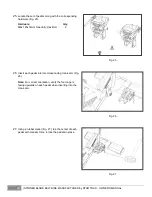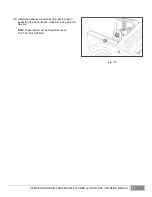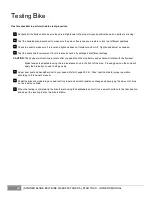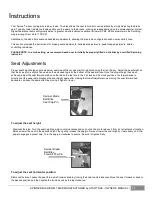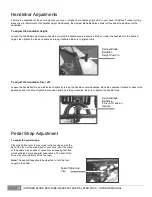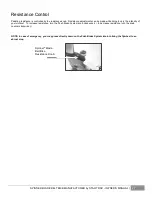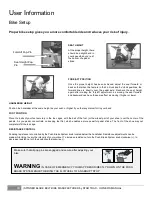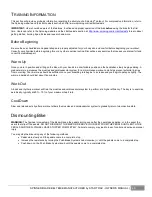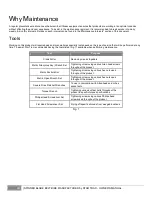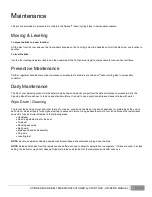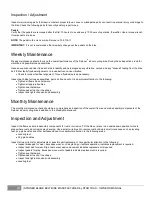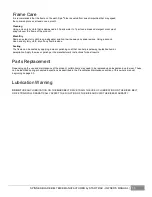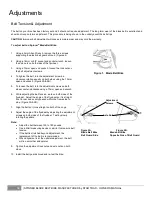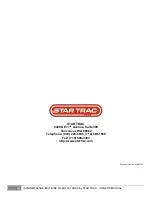
32
| SPINNER BLADE BELT BIKE MANUFACTURED by STAR TRAC - OWNER’S MANUAL
Inspection / Adjustment
Inspect major moving parts that require constant proper torque. Loose or misadjusted parts can result in personal injury or damage to
the bike. Check the following parts for security and/or proper torque.
Pedals
Verify that the pedals are re-torqued after the first 10 hours of use and every 100 hours of operation, thereafter. Use a torque wrench
if components are loose.
NOTE:
The pedal to the crank arm bolt torque is: 33-37 lb-ft.
IMPORTANT:
It is not recommended that members change out the pedals on the bike.
Weekly Maintenance
Weekly maintenance should focus on the overall performance of the Spinner
®
indoor cycling bike. During these inspections, look for
vibration and possible loose assemblies.
Have an experienced rider ride each bike to identify and help diagnose any vibration, noises, and any "unusual" feeling from the drive
belt. Either faulty flywheel alignment or a loose belt can cause vibration.
•
Check for proper flywheel alignment. Torque flywheel nuts as necessary.
Inspect each bike for loose assemblies, parts, bolts and nuts. Give particular attention to the following:
•
Tighten all frame base hardware.
•
Tighten all pop-pin handles.
•
Tighten seat hardware.
•
Tighten pedal toe clip / toe straps.
•
Inspect and tighten tension knob assembly.
Monthly Maintenance
The monthly maintenance check should be a comprehensive inspection of the overall frame and main assembly components of the
Spinner indoor cycling bike in addition to the Weekly Maintenance.
Inspection and Adjustment
Inspect the frame and main assembly components for rust or corrosion. Tilt the bike or place in an upside down position to locate
areas where rust and corrosion may develop. Use a small, wire brush to remove rust build-up in small crevasses, such as leveling
feet, pop pin handles and other bolt assemblies. Give particular attention to the following areas:
•
Leveling feet
•
Pop pin handles
Inspect all wear items for adjustments or possible part replacement. Give particular attention to the following:
•
Inspect brake pad for wear. Excessive wear, such as glazing or leather separation, indicates replacement is required.
•
Inspect seat pad for wear. Rips, tears or excessive movement indicates replacement is required.
•
Inspect pedals for play. Excessive movement of pedals indicates replacement is required.
•
Tighten seat hardware.
•
Tighten pedal toe clip / toe straps.
•
Inspect and tighten tension knob assembly.
•
Leveling feet.

